
The ERCO Ercoupe is an American low-wing monoplane aircraft that was first flown in 1937. It was originally manufactured by the Engineering and Research Corporation (ERCO) shortly before World War II; several other manufacturers continued its production after the war. The final model, the Mooney M-10, first flew in 1968 and the last model year was 1970. It was designed to be the safest fixed-wing aircraft that aerospace engineering could provide at the time and the type continues to enjoy a faithful following.
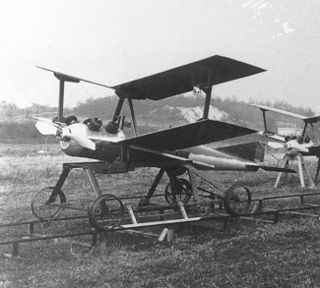
The Kettering Bug was an experimental unmanned aerial torpedo, a forerunner of present-day cruise missiles. It was capable of striking ground targets up to 121 kilometres (75 mi) from its launch point, while traveling at speeds of 80 kilometres per hour (50 mph). The Bug's costly design and operation inspired Dr. Henry W. Walden to create a rocket that would allow a pilot to control the rocket after launch with the use of radio waves. The British radio controlled weapons of 1917 were secret at this time. These designs were forerunners of modern-day missiles.

The Curtiss Model N was a military trainer used primarily by the United States Navy during World War I.

The Consolidated PT-1 Trusty was a biplane primary trainer used by the United States Army Air Service (USAAS).

The Curtiss Models F made up a family of early flying boats developed in the United States in the years leading up to World War I. Widely produced, Model Fs saw service with the United States Navy under the designations C-2 through C-5, later reclassified to AB-2 through AB-5. Several examples were exported to Russia, and the type was built under license in Italy.

The Curtiss Eagle was an airliner produced in small numbers in the United States shortly after World War I. The aircraft was a conventional biplane with three-bay, unstaggered wings of equal span. The fuselage was a very advanced design for its day, incorporating careful streamlining of its monocoque structure, and offering the crew as well as the passengers a fully enclosed cabin. The Eagle is sometimes named as the first American tri-motor aircraft; however Curtiss' own Model H flying boat flew with three engines for a time in 1914 before being converted back to twin-engine configuration.

The Dayton-Wright OW.1 Aerial Coupe was an American four-seat touring aircraft built by the Dayton-Wright Company of Dayton, Ohio. Because it was the last aircraft designed by Orville Wright, the design was given the designation OW.1. The aircraft was based on a heavily modified De Havilland DH.4. Although only one was produced, the Dayton-Wright OW.1 marks the first working example of a civilian single-engine four passenger light cabin aircraft.
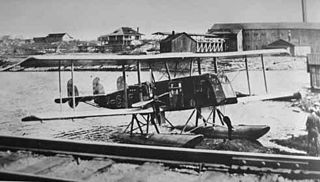
The Dayton-Wright FP.2 was a forestry patrol aircraft developed in the United States in the early 1920s for use by the Canadian Forest Service. It was a twin-engine two-bay biplane with equal-span, unstaggered wings that were designed to be interchangeable between top and bottom. Initially designed with the props in a pusher position, the engines were remounted in tractor position before the aircraft went into service. The cabin was fully enclosed and seated four, with the single pilot in an extensively glazed nose. The empennage had triple fins, and the landing gear consisted of twin pontoons. Only a single example was built. While in service the aircraft was modified with larger side windows, and controls for a second pilot.
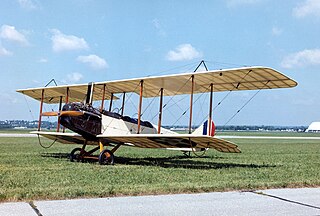
The Standard J is a two-seat basic trainer two-bay biplane produced in the United States from 1916 to 1918, powered by a four-cylinder inline Hall-Scott A-7a engine. It was constructed from wood with wire bracing and fabric covering. The J-1 was built as a stopgap to supplement the Curtiss JN-4 in production.

The Standard E-1 was an early American Army fighter aircraft, tested in 1917. It was the only pursuit aircraft manufactured by the United States during World War I. It arrived late in World War I, and as a result saw more use in the months following the Armistice than those preceding it.

The Bullet Monoplane or Alexander Eaglerock Bullet was a low wing cabin monoplane that was a departure from traditional biplane aircraft of the era.
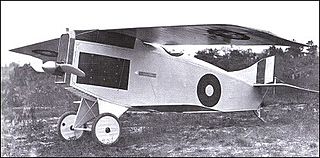
The Christmas Bullet, later known as the Cantilever Aero Bullet, was an American single-seat cantilever wing biplane. It is considered by many to be among the worst aircraft ever constructed.
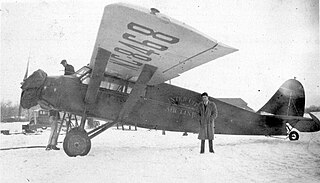
The Stinson Detroiter was a six-seat cabin airliner for passengers or freight designed and built by the Stinson Aircraft Syndicate, later the Stinson Aircraft Corporation. Two distinct designs used the Detroiter name, a biplane and a monoplane.
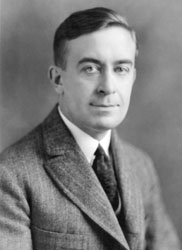
Alfred Victor Verville was an American aviation pioneer and aircraft designer who contributed to civilian and military aviation. During his forty-seven years in the aviation industry, he was responsible for the design and development of nearly twenty commercial and military airplanes. Verville is known for designing flying boats, military racing airplanes, and a series of commercial cabin airplanes. His planes were awarded with the Pulitzer Speed Classic Trophy in 1920 and 1924.

The American Eagle A-129 was a 1920s biplane built in the U.S.A.

The Verville Sport Trainer AT was a two-seat tandem biplane designed by Alfred V. Verville as a civilian version of the YPT-10 primary trainer, intended to appeal to the wealthy private owner.

The Wright-Bellanca WB-1 was designed by Giuseppe Mario Bellanca for the Wright Aeronautical corporation for use in record-breaking flights.

The Spartan C2 is a light aircraft produced in the United States in the early 1930s as a low-cost sport machine that would sell during the Great Depression.
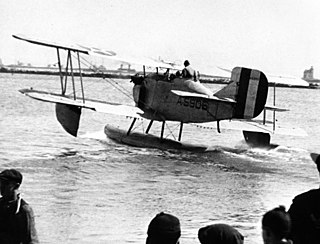
G Elias & Brother was and American manufacturer of cabinets and aircraft based in Buffalo, New York in the 1920s. A.G. Elias sat on the Manufacturers Aircraft Association's board of directors along with President Frank H. Russell, VP Glenn L. Martin, Charles L. Laurence, Chance M. Vought, S.S. Bradley, George P. Tidmarsh, and Donald Douglas. E.J Elias promoted the construction of a Buffalo municipal airport to aid the local fledgling airplane industry of five aviation companies constructing airplanes and airplane parts. From 1920 to 1925, Elias company's chief engineer, David Earle Dunlap (1896-1957), designed the Elias EM-2 Expeditionary planes. He designed the NBS-3 bomber fuselage and the Elias M-1 Mail plane. Dunlap's Elias TA-1 design was the first United States Army Air Corps Trainer to have a radial engine. After tests a McCook Field, the Army Air Corps selected other manufacturers over the Elias bomber and trainer. The company designed the Elias EM-1 to meet requirements for a multirole amphibian marine expeditionary aircraft. Elias delivered six production Elias EM-2 aircraft with Liberty engines to the United States Navy in 1922.

The Thunderbird W-14 was a small, three seat American passenger transport, first flown in 1926, entering production, significantly improved, in 1927 with several different engine options. About 40-50 were built before the financial collapse of the company in 1929.




















